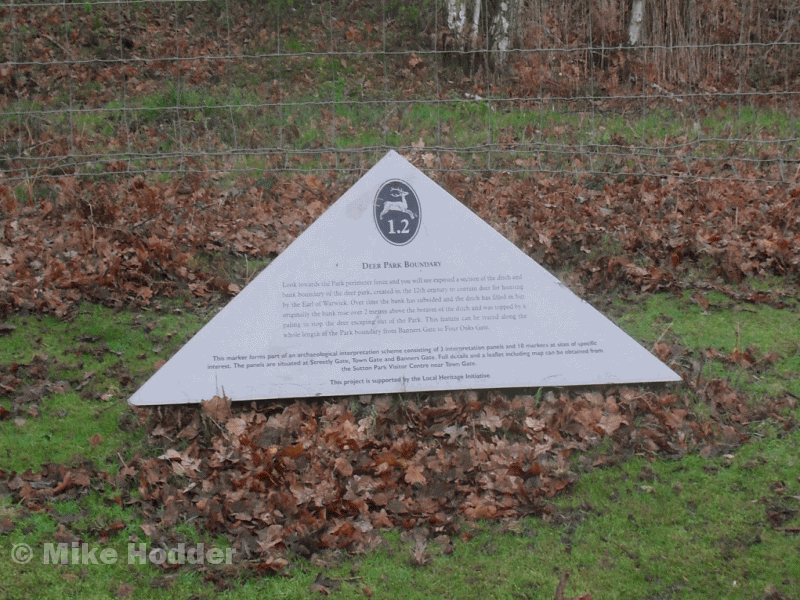Much more is known about the origins of Sutton Park now than forty years ago. Then historians were writing that it was a survival of an ancient forest and chase which once extended over a much wider area, and was left in its natural state when the rest of the area was developed. That was before 1977, when Mike Hodder started his archaeological investigations which were to prove that Sutton Park was deliberately laid out as a deer park shortly after the forest and chase were designated by the conquering Normans.
An accurate survey of the banks and ditches which formed the boundary of the twelfth century deer park was made, revealing that there had been an outer park with a circumference of over seven miles and a smaller inner park. Several of these massive bank and ditch features pass through what is now dense woodland, but these areas must have been devoid of trees when the boundaries were created by the hard-working serfs with their picks and shovels, so the area must have had a different appearance then..
The documentary evidence for the park is in a charter quoted by Dugdale in his Antiquities of Warwickshire of 1651. In 1126 King Henry I gave Sutton to Roger, Earl of Warwick in exchange for another manor, and the deed says that Earl Roger may have a deer park. Elsewhere in the Antiquities Dugdale mentions that Earl Roger’s father, Henry of Newburgh, the first Earl of Warwick, made himself a deer park at Wedgnock near Warwick “In imitation of King Henry I who made the park at Woodstock (containing seven miles in compass and which was the first in England)”, but that Wedgock park was much smaller.
This leads one to think that Henry I must have made the original outer park of about the same size as Woodstock (now Blenheim), probably shortly after 1100 while Sutton was still a royal manor. The smaller inner park was made after the King exchanged the Manor, to suit the less extravagant needs the Earls of Warwick after 1126.
In his new book, Mike Hodder discusses this theory, but points out that the archaeology is more complex - there are four different boundary features rather than two, and the park may have originally extended as far east as Lichfield Road. The evidence is presented in The Archaeology of Sutton Park, by Mike Hodder, available from Waterstones bookshop in Sutton price £17.99.
